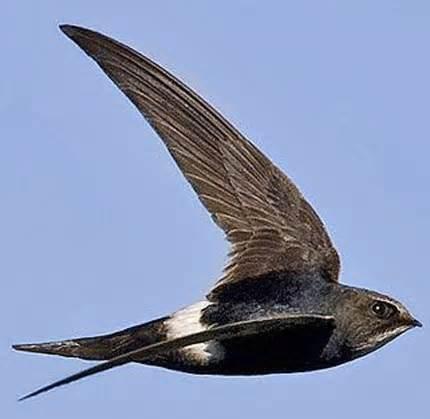
Victim of green energy
Fox News: There hasn’t been a sighting of a White-throated Needletail in the United Kingdom for 22 years, so nearly 80 birdwatchers flocked to Scotland this week to get a look, the Telegraph reported. But instead of enjoying the world’s fastest flying bird soaring, they watched it fly into the small blade of a wind turbine and die.
“It was seen by birders fly straight into the turbine. It is ironic that after waiting so long for this bird to turn up in the UK, it was killed by a wind turbine and not a natural predator, “ Josh Jones of Bird Guides said.
The Needletail was apparently thousands of miles off course when two bird spotters identified it on the isle of Harris Monday. By Wednesday, scores of watchers had gathered in the Tarbet area of Harris, Outer Hebrides, Scotland to catch a glimpse of the rare bird.
“It’s tragic. More than 80 people had already arrived on the island and others were coming from all over the country. But it just flew into the turbine. It was killed instantly,” Jones told the Telegraph.
Avid bird watcher David Campbell witnessed the accident Wednesday. “We all ran over there and were heartbroken to find the poor bird lying beneath the machine, in perfect condition apart from blood and slight trauma on the head - but it was stone dead. Cries of sorrow and anger from the assembled birders began to turn into discussion as to what would happen to the bird’s corpse, as we took pictures of it lying there. Seeing it up close, as much as I’d rather it were still alive, was, if nothing else, a rare opportunity to examine the utterly amazing plumage and structure of the Needletail,” Campbell wrote in his blog, Devil Birder.
Experts believed the bird had likely come from Siberia, Australia, or Japan. It may have gotten lost and affected by the weather. A spokesman for Bird Guides said it was only the ninth time it was spotted in the UK since 1846.
“A very sad end to a delightful bird that may well have attracted many more birders to Harris over the following days had it not met it’s untimely demise, “said Western Isles wildlife expert Steve Duffield.
The bird’s body will be sent to a museum.
The unintended consequences of green energy. So sad.
h/t Anon
DCG

